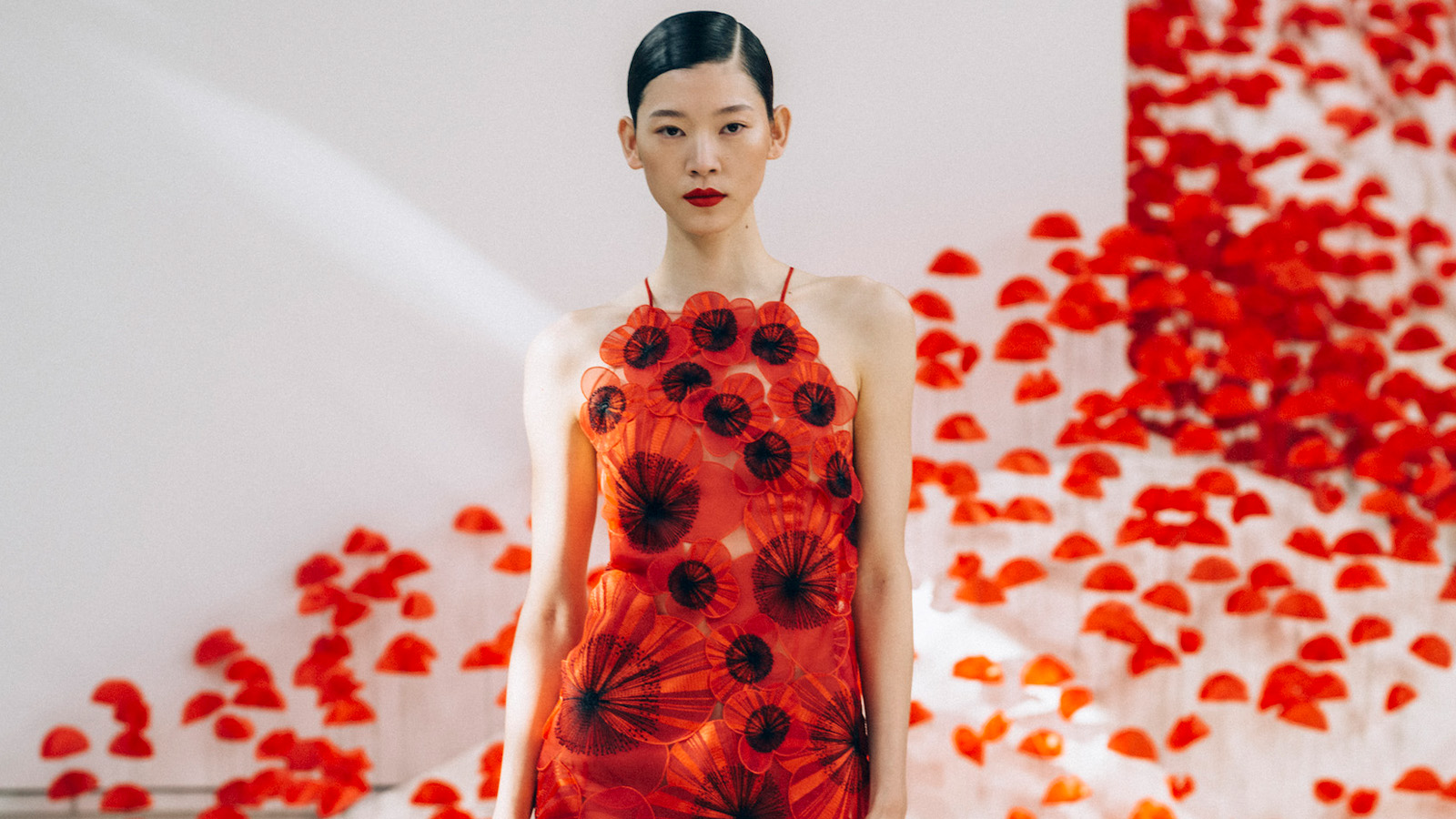
In partnership with Akris
For Akris’ Spring 2024 collection, creative director Albert Kriemler turned to the work of Austrian textile designer Felice ‘Lizzi’ Rix-Ueno (1893-1967) for botanical and tonal inspiration, in particular her fascination with poppies. ‘Petals resembling little round fans. Free-floating oval fruits… all in shades of blue, yellow and poppy red,’ said Kreimler, describing the collection. ‘These distinct compositions bring to mind the illusion of movement.’
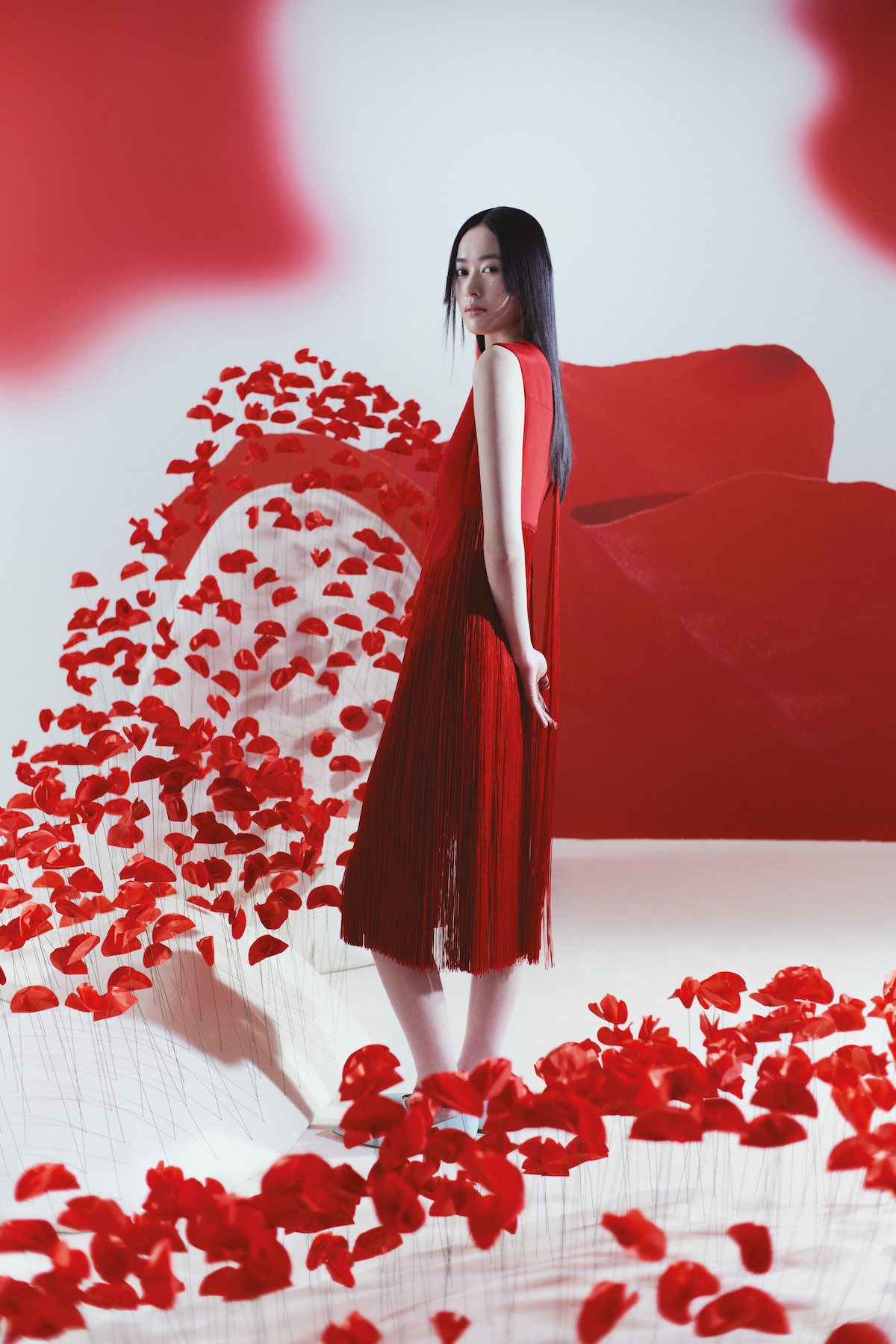
At Akris’ atelier in St Gallen, Switzerland, creative exploration often begins with a new ‘artist relationship’. At the genesis of the design process, Kriemler will fire his imagination through galleries, books and archival material, sometimes making studio visits to gather colour, structure and texture references, before eventually deciding on a particular story that complements the season’s mood. In response to the moment, fabrics, patterns, and silhouettes are reinterpreted. Artistic collaborations are forged. A new collection takes shape.
Back in S/S 2018, Akris paid tribute to the colour and graphic sensibility of American designer and artist Alexander Girard (1907-1993). For Spring 2021, it was the work of German artist Imi Knoebel that inspired the brand’s futuristic, colour-saturated pieces.
Akris Spring 2024
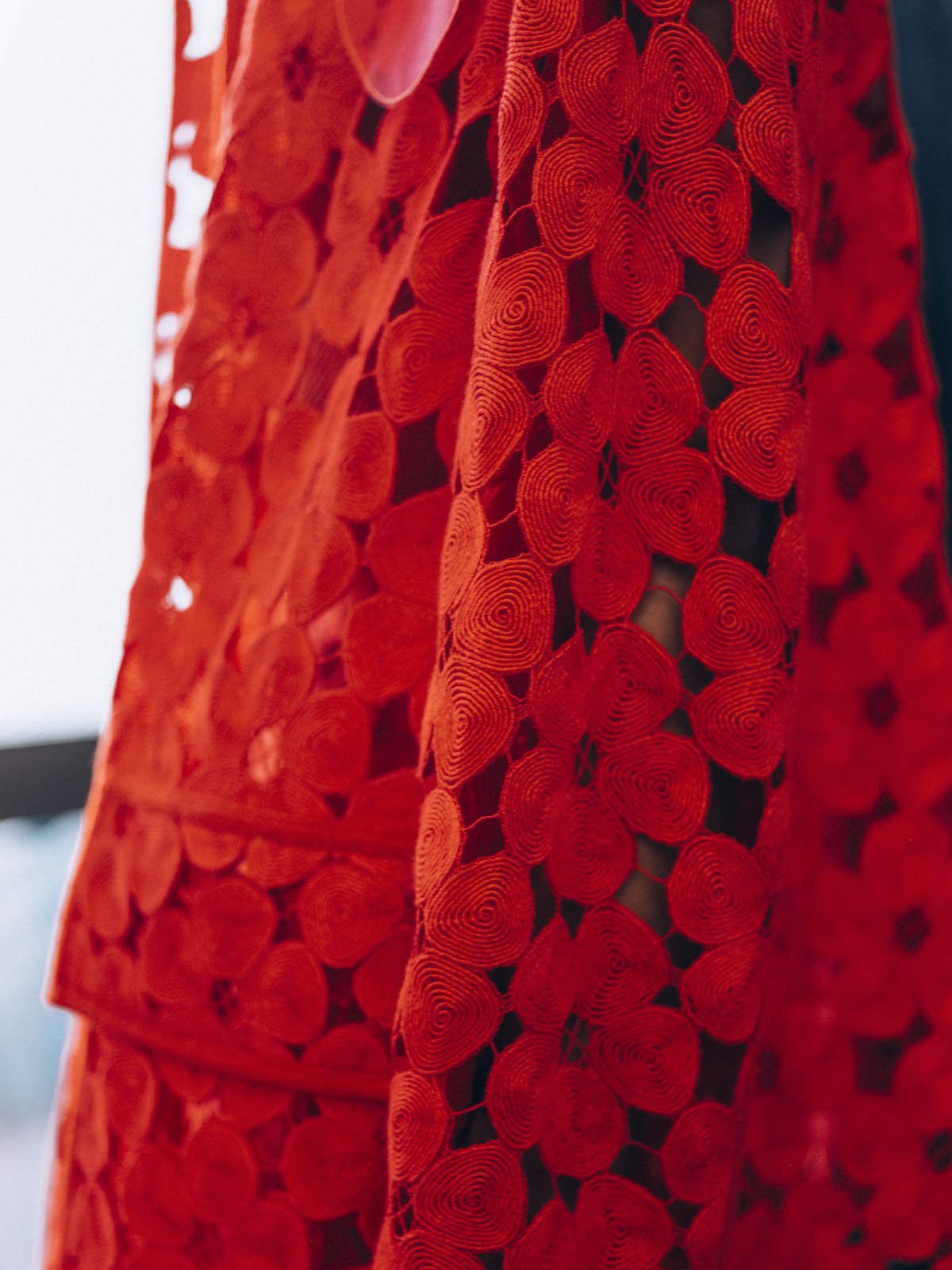
The Spring 2024 collection is informed by Rix-Ueno’s delicate but powerful textile designs made at the Wiener Werkstätte and later in her adopted home of Kyoto, Japan embracing both the Mitteleuropean graphics of the early 20th century and the traditional floral, bird and fruit motifs of Japanese craft.
Rix-Ueno’s poppy sketches are interpreted by Kreimler and St Gallen’s embroiderers Forster Rohner on cocktail dresses and organza blouses, with each individual poppy applied by hand. Her design for an Easter bon-bon box decorates a shirt dress, while her watercolour and pencil avian abstracts appear on a button-down collar shirt and combat trousers ensemble. Elsewhere in the collection, the poppy print is rendered as a discreetly drawn border on a light-coloured suit.

Kriemler first came across Rix-Ueno’s ‘design poetry’ at the Museum of Applied Arts, Vienna in March 2023. ‘I was amazed by her passion to create a visual language of her own – to become one of the most remarkable textile and craft artists of the 20th century,’ he says. ‘Strong colour contrasts let her art shine to this very day, most fabulously in her flowers and birds. Her whimsical ideas made the universal personal.’
Viennese modernism, he adds, was defined as a search for reduction and rationality. ‘And then Lizzi came along, bringing ornament, vibrancy, colour and curves.’ A century on, her work still presents a concept of fantasy. ‘For her, it meant demonstrating imagination to achieve originality,’ says Kriemler.
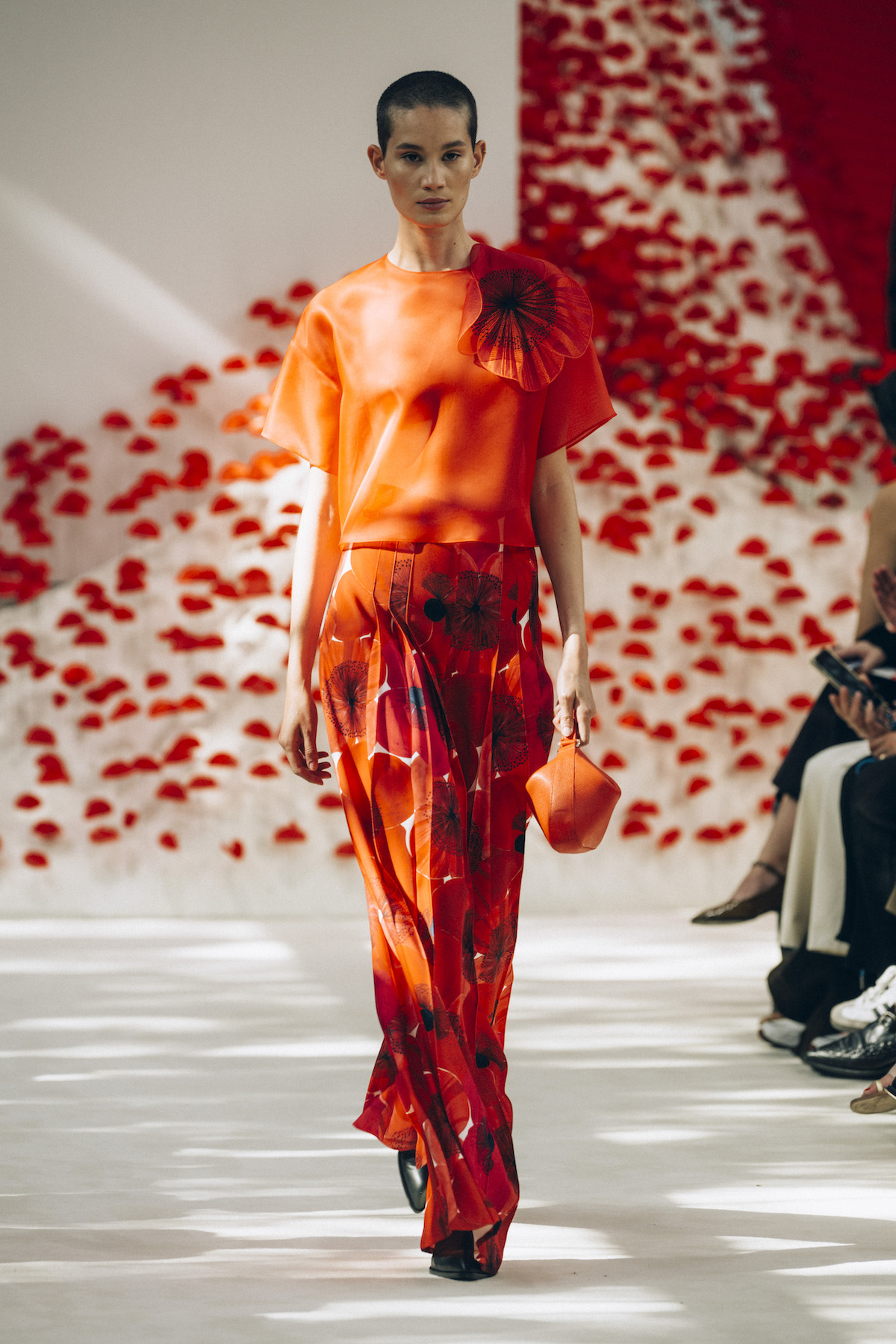
Educated at the University of Applied Arts in Vienna under architect Josef Hoffmann, Rix-Ueno created hundreds of drawings, mainly for fabric patterns, but also for wallpaper, embroidery, enamel work, fashion and home accessories, toys, and graphic artwork. She moved to Kyoto after marrying Japanese architect Isaburō Ueno in 1925, and they later founded a design school in the city. ‘Lizzi was convinced that only inner creativity will lead to one’s identity, truly believing in the expressive possibilities of craft,’ says Kriemler. ‘I very much relate to her idea of craft as a momentum.’
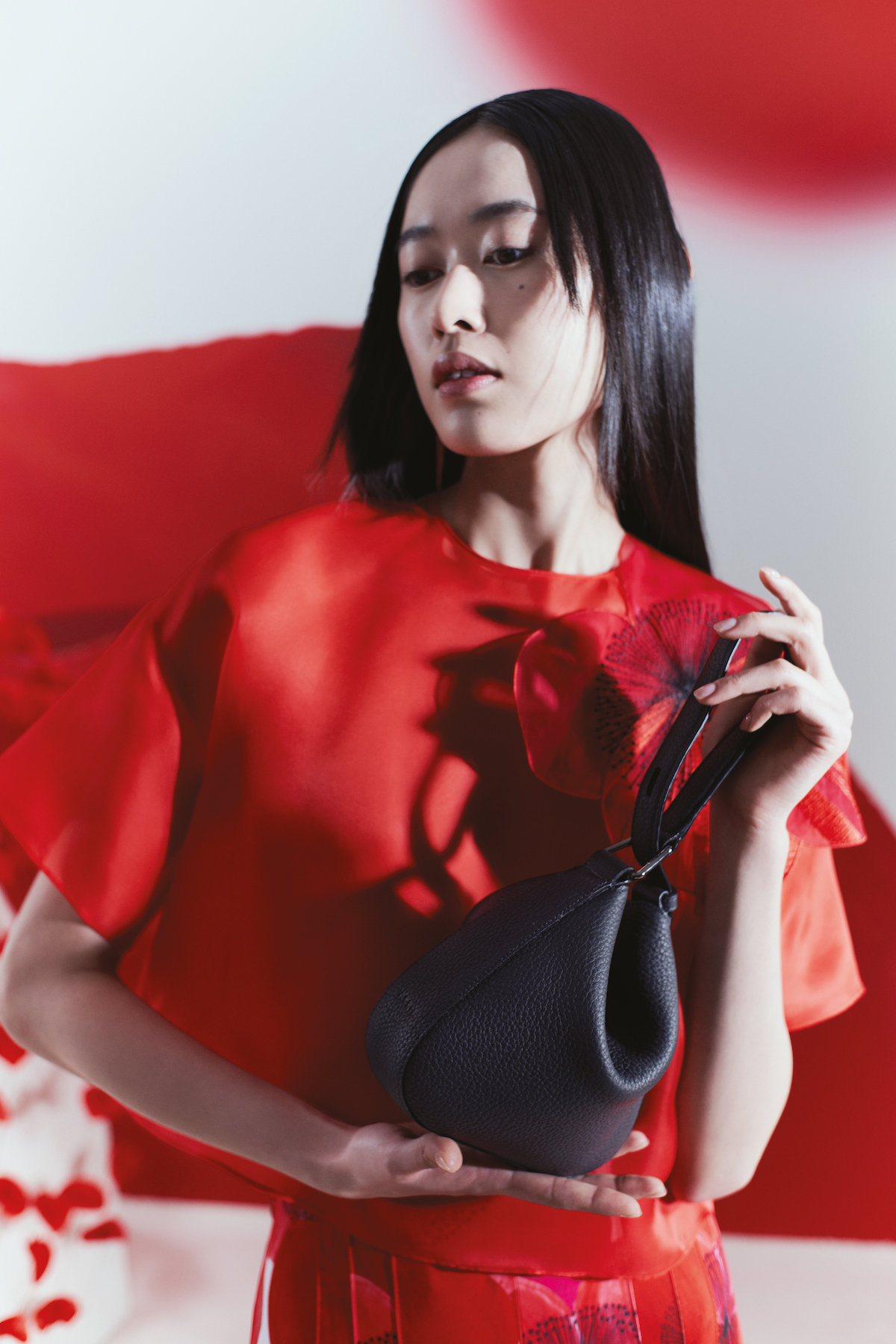
Rix-Ueno’s aesthetic can be seen throughout this season’s Akris collection, woven into the hand-embroidered poppies, in tassels transformed into sleek fringes, and in floaty organza incorporated into the architecture of suits and coats. ‘I want to celebrate the infinite imagination of “fantasie”,’ says Kriemler. ‘This new Akris collection is a dedication to Lizzi.’
The exhibition ‘Stars, Feathers, Tassels. The Wiener Werkstätte Artist Felice Rix-Ueno’ is at the MAK, Museum of Applied Arts in Vienna, until 21 April 2024







